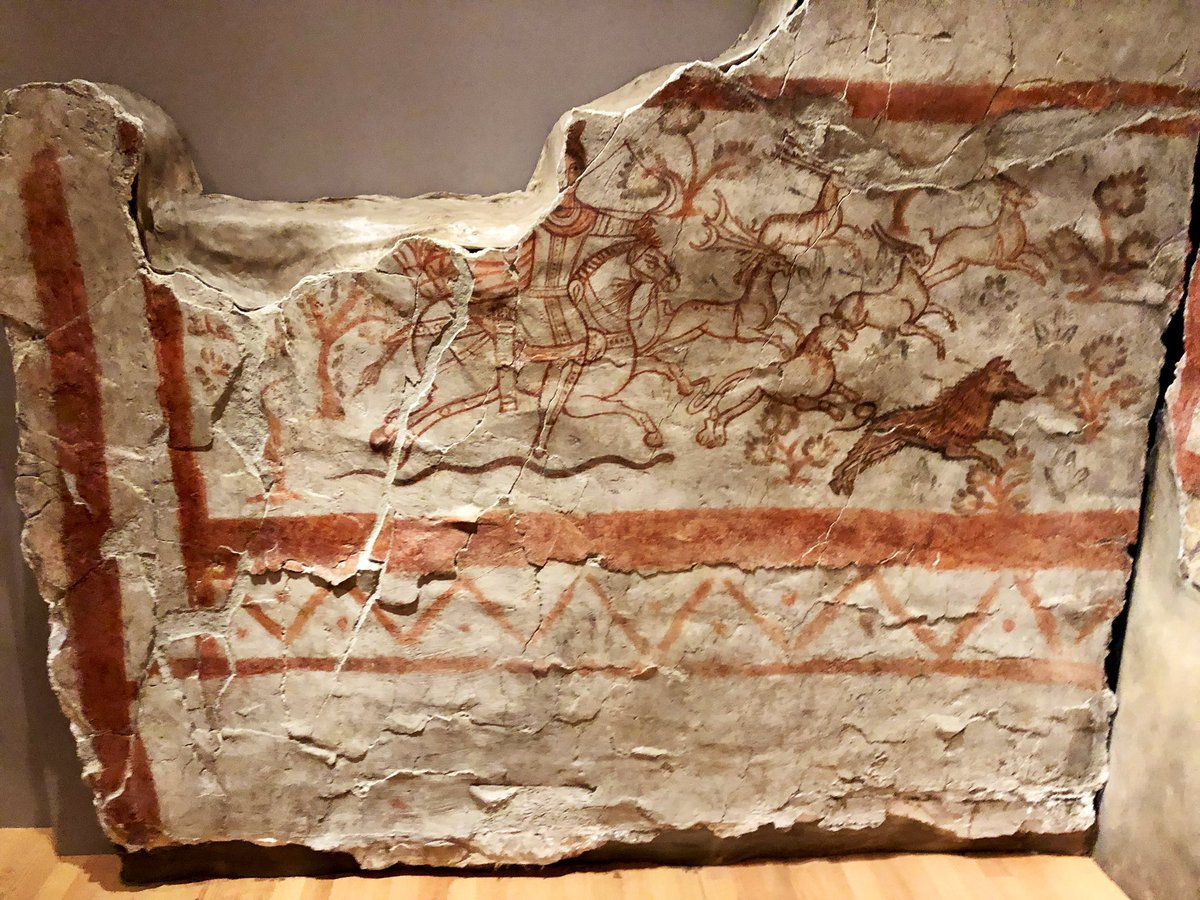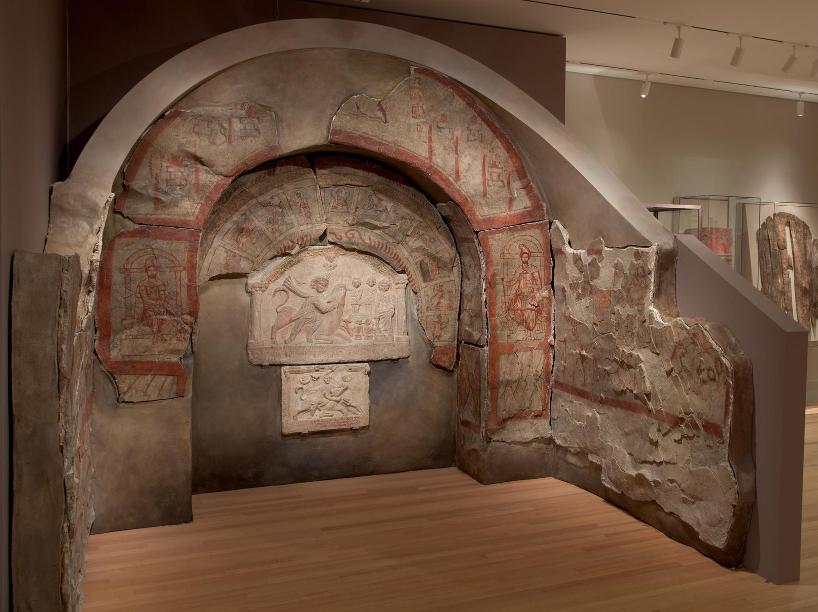Try Amazon Audible Premium Plus and Get Up to Two Free Audiobooks

Shop Amazon - Create an Amazon Baby Registry
Palmyrene Horsearcher Hunting
Left Side of Shrine to the God Mithras (Mithraeum), Dura Europos, Syria, c.240AD.
Yale University Art Gallery.

A larger image of this wall-painting of a Palmyrene Horsearcher Hunting, from Dura Europos.
Photo by Alison Fisk

A larger image of the Shrine to the God Mithras, from Dura Europos.
Compare this to the installation of the Niche of the Mithraeum at Yale University Art Gallery in 1939.
Shrine to the God Mithras (Mithraeum)
ca. A.D. 240
Painted plaster
162.5 × 206.4 cm (64 × 81 1/4 in.)
Yale-French Excavations at Dura-Europos
1935.100
A shrine to the god Mithras, the Mithraeum at Dura-Europos was commissioned in A.D. 168–69 by Palmyrene archers serving in the Roman army. It was renovated and enlarged in A.D. 209–11. The reconstruction on view here represents the third and final phase, dating to around A.D. 240. Unlike most Mithraea, which were underground to commemorate the god’s birth in a cave, the Dura Mithraeum was built into a private house.
The cult of Mithras attained popularity in the Roman period among soldiers and merchants. Restricted to men, it was a mystery religion thought to include initiation, ritual banquets, and the promise of salvation after death. The primary cult image was the tauroctony, or Mithras slaying the Cosmic Bull, often paired with an image of Mithras banqueting with Sol, god of the sun. Other common images included events from the life of Mithras and zodiac signs.
While the subjects depicted in most Mithraea are similar, style and composition vary. The Dura Mithraeum contained two tauroctony reliefs, one above the other. The side walls showed Mithras as a mounted archer in a presentation that would have resonated with the Palmyrene archers who founded the shrine.
Source: Yale University Art Gallery 1935.100
See also an extract from M. I. Rostovtzeff, "The Mithræum of Dura-Europos on the Euphrates", pp. 3-10 in the Bulletin Of The Associates In Fine Arts At Yale University, Vol. 9, No. 1 (Jun., 1939)
Wall-painting of horsemen hunting onagers. Parthian, second century. Dura Europos. Musée du Louvre, Paris.
and Sasanian and Central Asian Plates (and bowls, cups, cameos, plaques, paintings and textiles with similar iconography)



